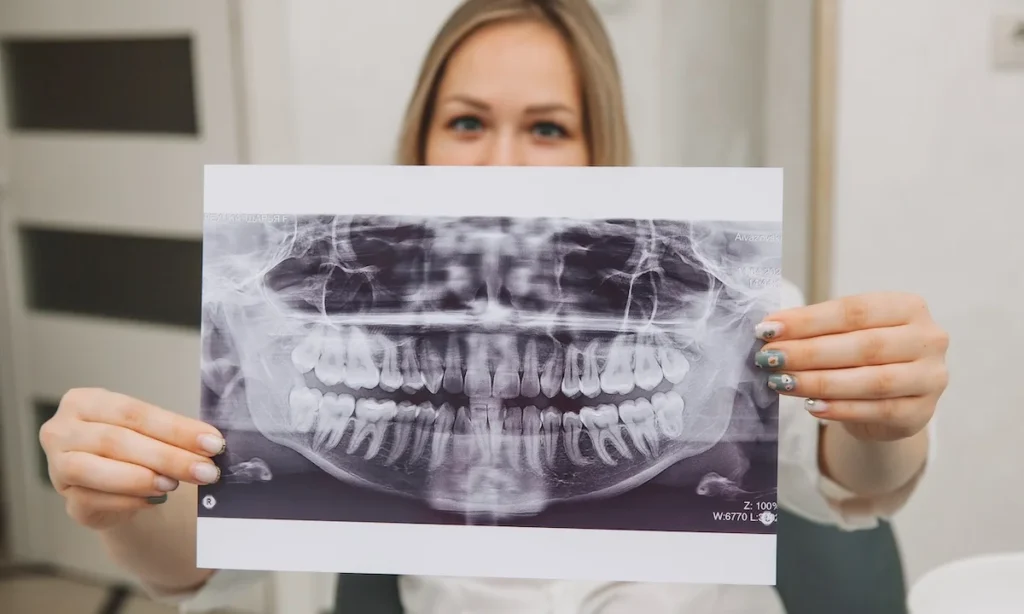Wisdom tooth pain often shows up during your late teens or early twenties. Some lucky individuals aren’t too affected by this, just experiencing a little tenderness. But for others, it can be incredibly sore and uncomfortable. Any pain that lingers or gets worse over time could be pointing to a deeper issue.
In this guide, we take a look at some of the common causes of wisdom tooth pain. We’ll cover what’s considered “normal,” when professional care like removal might be needed, and what you can do at home to find relief.
What Causes Wisdom Tooth Pain?

Sometime between the ages of 17 and 25, your wisdom teeth begin to erupt. If there’s limited space, they can press against other teeth and irritate the gums. It’s similar to teething in infants, and equally as uncomfortable. In some cases, a tooth only partially breaks through or stays trapped under the gum, which can lead to swelling, infection, or ongoing pain.
When a wisdom tooth grows at an angle or presses into the one beside it, this is called impaction. It can build pressure in the jaw or gum, which is often painful. Even when an eruption seems to be fairly normal, it’s not unusual to feel a dull ache. Pain that sticks around or suddenly gets worse usually means you might have other dental problems, though.
If you’re feeling extreme or lasting pain, it could be one of these issues:
- Swollen or inflamed gums (pericoronitis)
- Nearby teeth getting crowded or pushed
- A tooth that’s only partly erupted or impacted
- Tooth decay in hard-to-clean wisdom teeth
- Infection in the surrounding gums or jaw
What Wisdom Tooth Pain Feels Like
Most people just want to know if what they’re feeling is normal, but wisdom tooth pain shows up in different ways. It’s not always easy to tell when something’s wrong. Some “red flag” symptoms to look out for include:
- A steady ache in the back of your mouth or jaw
- Red, swollen, or tender gums near the tooth
- Pain that radiates to your ear, neck, or side of the face
- Discomfort while chewing, speaking, or opening your mouth
- Bad breath or a lingering unpleasant taste
How Long Does Wisdom Tooth Pain Last?

Mild pain might settle down within a few days. If it stays for more than a week (or keeps coming back), take that as a sign that something more is going on.
Can Wisdom Tooth Pain Go Away on Its Own?
In some (lucky) cases, you might find that your wisdom tooth stops being a problem on its own. If the tooth is erupting cleanly and there’s space, you might just feel some “teething” pains and then nothing once it’s all done. But if not, the pain could point to issues like:
- Impaction: When the new tooth is stuck below the gum or pressing against other teeth
- Pericoronitis: Swelling or infection in the gum tissue over a partially erupted tooth
- Decay: Wisdom teeth can be hard to reach and clean, and are prone to cavities and gum issues
How to Relieve Wisdom Tooth Pain at Home
If you’re waiting for a dental appointment and need short-term relief, try:
- Rinsing with warm salty water
- Using a cold compress outside your cheek
- Taking Panadol or ibuprofen
- Numbing the gum with a gel that contains benzocaine
- Sleeping with your head slightly raised
These can take the edge off, but if there’s an underlying issue, it won’t fix the cause.
Can Panadol Help With Wisdom Tooth Pain?
Panadol (or paracetamol) can help bring down pain and discomfort. It’s often effective on its own or when taken with ibuprofen. Always follow the dosage directions, and speak to your GP or pharmacist if you have any concerns or medical conditions.
When to See Your Dentist

Unsure whether your wisdom tooth pain needs attention or not? If you’ve been nodding along unhappily to the lists of symptoms, or it’s been affecting your day-to-day, this is worth getting checked. Book a visit if you notice:
- Pain lasts more than a few days
- There’s swelling in your face or gums
- You can’t open your mouth properly
- You notice signs of infection, like pus or fever
- It’s hard to sleep, eat, or focus
- The pain keeps coming and going
Even if this is your first dental visit, your dentist can take X-rays to see how your wisdom teeth are developing and suggest the next steps.
Wisdom Tooth Pain Treatment Options
The right treatment depends on what’s causing the issue. After a proper check-up, your dentist might recommend:
- Monitoring: If the teeth are erupting without pain or complications
- Deep cleaning or antibiotics: For infections like pericoronitis
- Minor gum surgery: To remove tissue that’s blocking the tooth
- Extraction: If the tooth is impacted, decayed, or causing crowding
Still in Pain? Book a Consultation
Wisdom tooth pain doesn’t have to disrupt your day. If it’s making it hard to eat, sleep, or focus, let us help. Mona Vale Dental offers personalised care in a calming setting. Whether your teeth need monitoring, pain management, or extraction, we’ll help you move forward with confidence.



